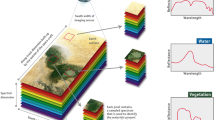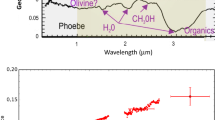Abstract
India’s first lunar mission, Chandrayaan-1, will have a Hyper-Spectral Imager in the visible and near-infrared spectral bands along with other instruments. The instrument will enable mineralogical mapping of the Moon’s crust in a large number of spectral channels. The planned Hyper-Spectral Imager will be the first instrument to map the lunar surface with the capability of resolving the spectral region, 0.4 to 0.92 Μm, in 64 continuous bands with a resolution of better than 15 nm and a spatial resolution of 80 m. Spectral separation will be done using a wedge filter and the image will be mapped onto an area detector. The detector output will be processed in the front-end processor to generate the 64-band data with 12-bit quantization. This paper gives a description of the Hyper-Spectral Imager instrument.
Similar content being viewed by others
References
Nathues A, Mall U and Keller U 2000 Near-Infrared Spec- trometry with SIR on Smart-1;Proc. Fourth Int. Conf. on the Exploration and Utilization of the Moon 101–103.
Author information
Authors and Affiliations
Rights and permissions
About this article
Cite this article
Kiran Kumar, A.S., Roy Chowdhury, A. Hyper-Spectral Imager in visible and near-infrared band for lunar compositional mapping. J Earth Syst Sci 114, 721–724 (2005). https://doi.org/10.1007/BF02715956
Issue Date:
DOI: https://doi.org/10.1007/BF02715956




